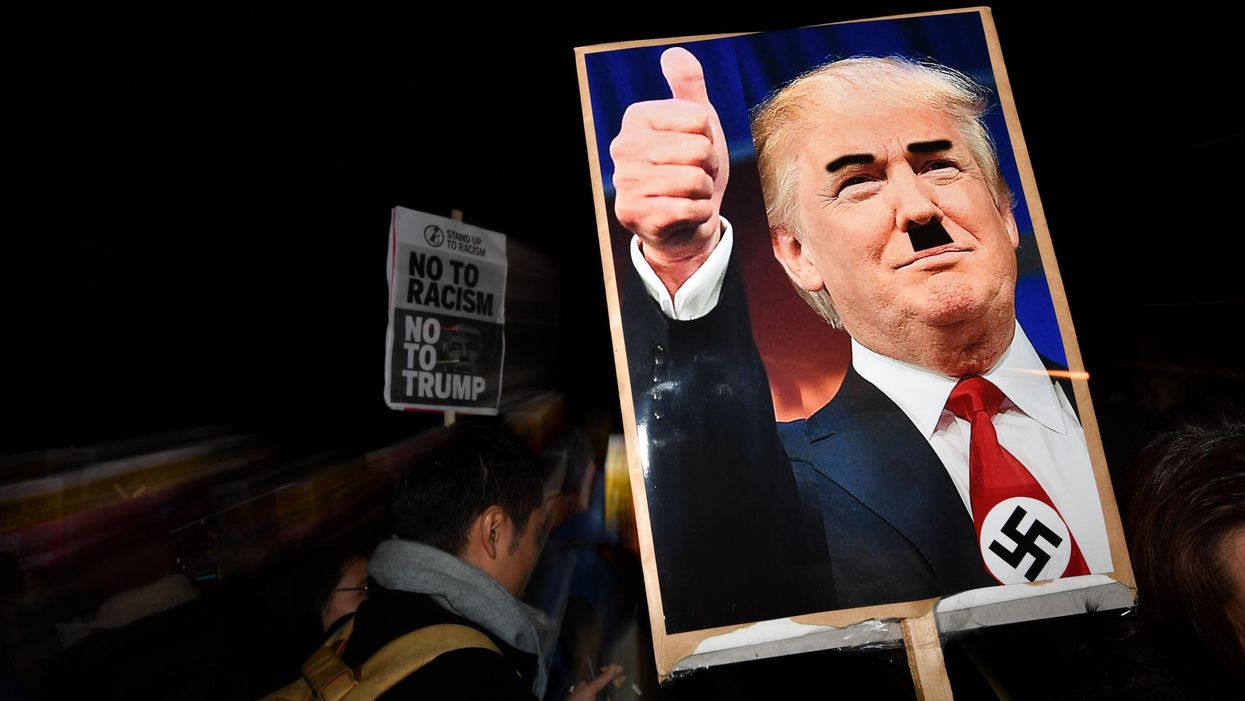News
Harriet Marsden
Apr 24, 2017

Picture:
Getty Images / Ben Stansall
Comparing dictators to Hitler, or fascists to Nazis, is often criticised as intellectually lazy, inaccurate and even dangerous.
However, over the past year parallels drawn between the rise of Adolf Hitler and Donald Trump have been numerous.
A 1922 article from the New York Times archive resurfaced in February 2015, which massively underestimated Hitler's capacity for destruction, dismissing much of his campaign promises as political rhetoric.
Many drew comparisons with the response to Trump's victory, after which people were hopeful that Trump cynically uses nationalism and xenophobic anti-immigration in order to gain votes, but will be tempered from acting on his more brutal promises.
Some of the descriptions of Hitler and the rise of Nazi populism seemed very familiar...
Another condition favourable to the outburst of the movement is the widespread discontent with the existing state of affairs among all classes in the towns and cities under the increasing economic pressure.
He is a man of the 'common people' and hence, has the makings of a 'popular hero' appealing to all classes.
His program consists chiefly of half a dozen negative ideas clothed in generalities... He probably does not know himself just what he wants to accomplish.
He talks rough, shaggy, sound horse sense, and according to... public opinion, a strong, active leader equipped with horse sense is the need of the hour.
In particular, one image of a sign in the US Holocaust Memorial Museum, which describes 14 early signs of fascism, went viral after acting attorney general Sally Q. Yates was fired.
Timothy Snyder, Yale professor of history and author of On Tyranny: Twenty Lessons from the Twentieth Century, released this video explaining the value of comparison.
He explains how comparing Trump to Hitler can be useful, despite key differences.
Obviously, comparing Trump to Hitler does not necessarily imply that Trump is going to perpetrate a genocide.
Nevertheless, without a proper consideration of history we are doomed to repeat its mistakes.
Transcript:
So the way to start the discussion about comparisons is to point out that Americans are extremely lazy about history. I mean that's one way in which were definitely number one among major nations.
And one of the ways we’re lazy about history is that as soon as anyone suggests that the past might be useful, then we say “but wait it's not exactly the same and therefore I'm just going to discard it.”
In that way in two or three seconds we give ourselves an excuse not to think about history.
The premise of the book “On Tyranny” is not that Hitler is just like Trump or Trump is just like Hitler. The premise is that democratic republics usually fail and it's useful for us to see how they fail.
One of the ways a democratic republic can fail is Germany in 1933. There are plenty of other examples in the book, also from the left wing Czechoslovakia in 1948 becoming communist.
The point of the book is that these things really happened over and over again and that intelligent people, no less intelligent than us, experienced them and left a record for us to learn from.
So what I'm trying to do in the book is to help us to learn from that record so we don't have events like Germany in 1933 or Czechoslovakia in 1948.
Just saying “Hitler's not like Trump“ or ”Trump is not like Hitler” isn't going to save us.
Learning for the past though, could.
H/T: UK Business Insider
More: This list of 14 early warning signs of fascism is chilling
More: This 1922 quote about Hitler has chilling parallels with Donald Trump
Top 100
The Conversation (0)













